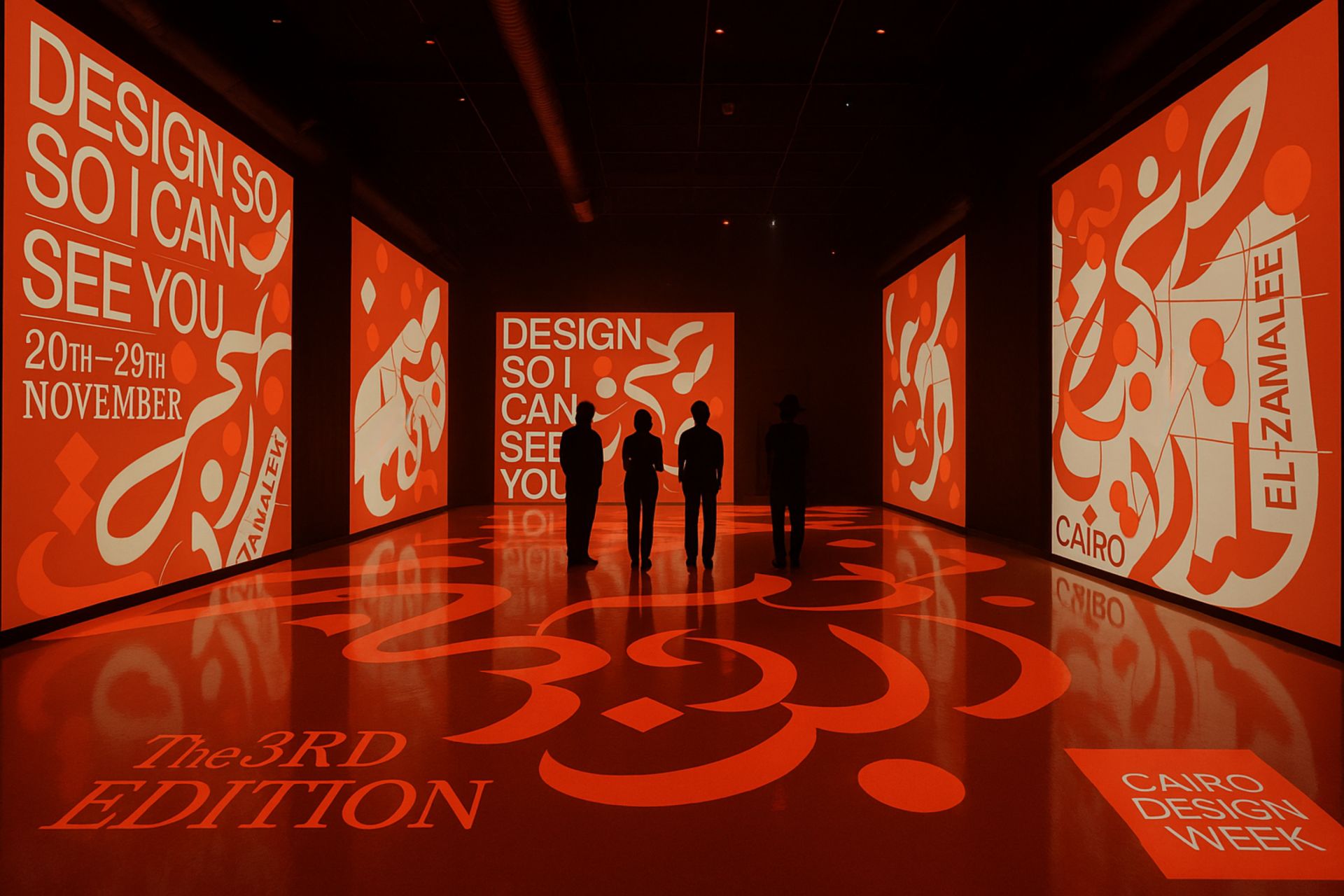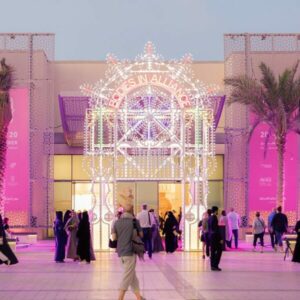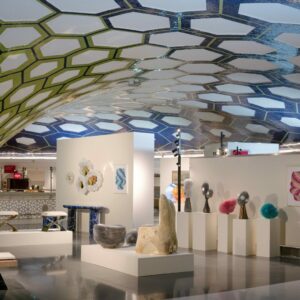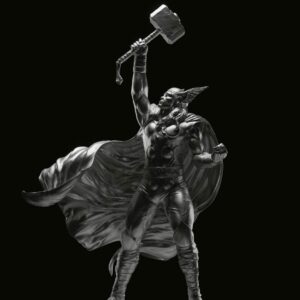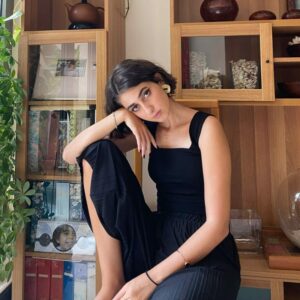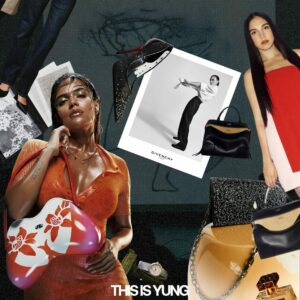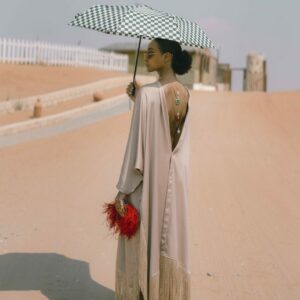As I stepped into Ghurnata Community Space for this year’s opening of Cairo Design Week (Instagram) in Heliopolis, the air felt theatrical from the start. Warm light spilled onto worn stone architecture, seeping through archways as if guided by memory. The building and surrounding palace breathed history, a living, watchful presence. Fabric, form, scent, and silence layered themselves into a kind of choreography, one that asked visitors to move slower, to look longer, to listen differently.
Guests drifted through the space in unspoken agreement, their voices softened by the high ceilings and the weight of what surrounded them. Shadows clung to the archways; soft installations hovered in corners like thoughts mid-formation. It was not a room to pass through, but one to enter carefully, as though design here was not simply displayed, but felt, absorbed, negotiated.
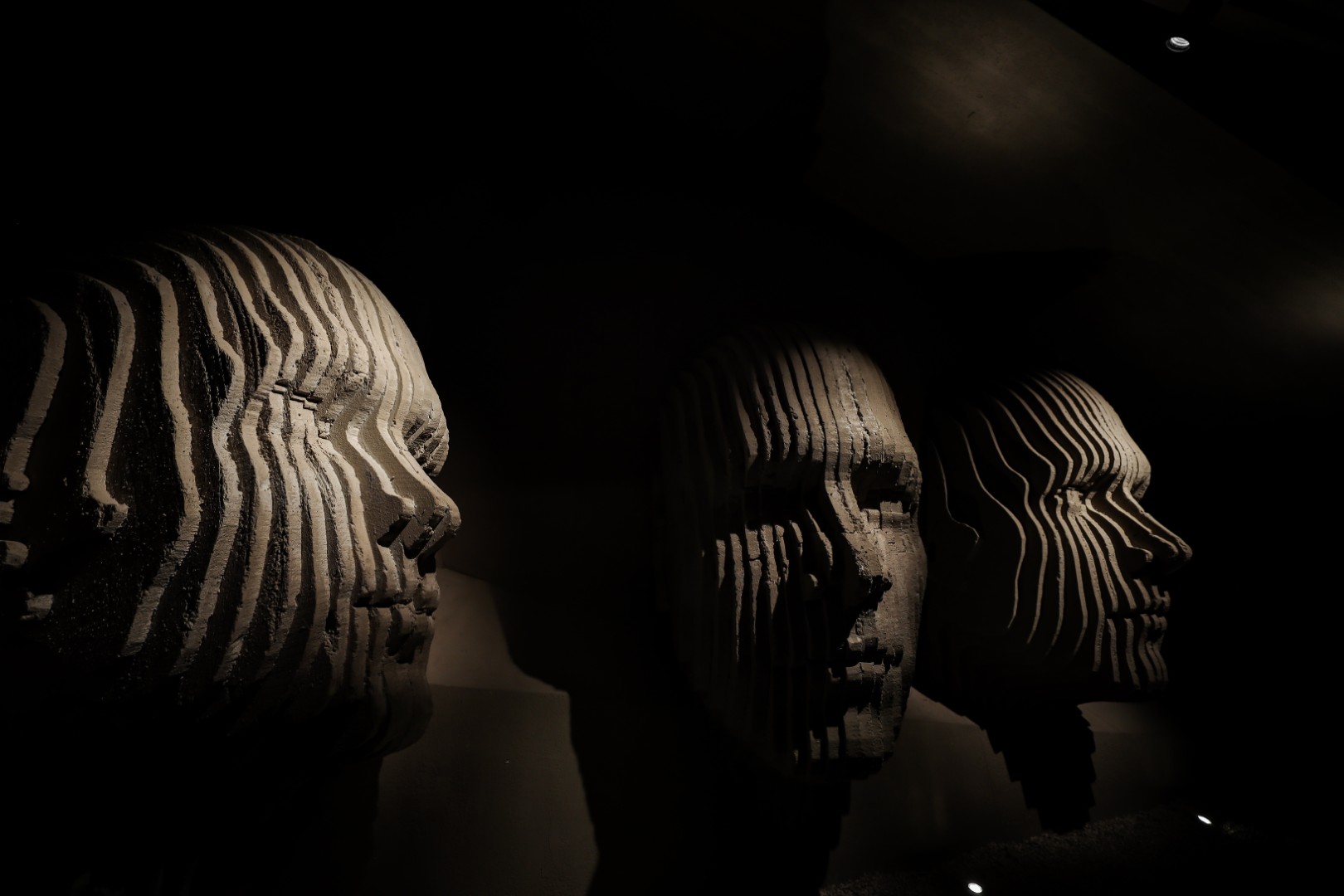
This year’s edition is guided by the phrase “Design, so I can see you.” A soft echo of Socrates’ “Speak, so that I may see you,” reiterated in Arabic through a Cairo-inflected intimacy. Underneath the visual identity created by Nadine El Gabry, flowing, calligraphic, and human in its irregularity, design becomes a way of saying: we are here, and we have always been.
The opening night offered a series of installations that felt like encounters with memory, craft, and ritual. Inside the basilica’s stillness, “Lapse: Hymnal” rested beneath its dome. As visitors stepped closer, some almost instinctively kneeling, the presence of General Edouard Empain’s tomb seemed to surface from the ground itself. It reframed the church not only as a religious space, but as a sanctuary for its founding figure, for time, and for the intimate act of remembering.

In another corner of the experience, an installation under the design direction Passion to Perform and designed and styled by Allia Hakam, imagined a future where fashion and food coexist through circular thinking. Upcycled fabric scraps lay alongside preserved ingredients; modular design elements suggested garments, tablescapes, relics of something both domestic and divine. The table became an altar of possibility, where materials lived multiple lives, and beauty existed through reuse, reassembly, and re-meaning.
Then, in a deeply theatrical gesture, “Theatricalities of Khayamiya” by Nadine Hammad brought the fragile power of Egypt’s tent-making heritage into conversation with architecture itself. Installed within Radwan Bey Palace in Historic Cairo, the intervention rejected permanence in favour of mutability and time. The Khayamiya tent challenged traditional conservation philosophies, suggesting that temporary architecture could become a poetic, living tool of revival.

Running until November 29th, Cairo Design Week unfolds in three districts that hold the city’s emotional DNA. In Heliopolis, the dialogue is between skin and memory. Under the curatorial theme “Second Skin,” led by photographer and interior architect Karim El Hayawan in partnership with Nehal Leheta, the district becomes a study in intimacy; how spaces, garments, materials, and buildings sit close to the body and to history. Wandering through Ghurnata Palace and the surrounding heritage villas, design feels like a gentle negotiation with time. The architecture remembers more than we do, how do you honour history without freezing it into nostalgia? This is also where the Fashion Design District lives, curated by Maison Pyramide in partnership with stylist and costume designer Mai Galal. Technically, it was born as a wing of Cairo Design Week. This year, it behaves like its spine, with couture houses and brands like Soha Murad, Okhtein, Reform Studio, Almah, and Nicolas Jebran.

Over in Zamalek, design shifts into something more introspective and self-assured. Under the theme “In Between Islands,” curated by architect and creative director Hala Saleh of TDF+, the district explores thresholds; between movement and stillness, tradition and modernity, individuality and community. Inside palaces, galleries, and tree-lined streets, the work feels intimate, almost conversational. It echoes the spirit of Zamalek itself: a place of studios, salons, and late-night ideas.

Meanwhile, in Downtown, the space does not attempt to beautify the chaos, but to sit with it. To examine how design can become more ethical, more emotional, more human in a city shaped by rupture, politics, endurance, and reinvention. Under the curatorial vision “Toward a More Human Design Language” by designer and artist Karim Mekhtigian, the neighbourhood’s layered contradictions are laid bare rather than disguised. Crumbling facades sit beside surviving grandeur; colonial remnants coexist with new resistance. Design in Downtown operates almost archaeologically, unearthing histories embedded in walls, streets, and forgotten interiors.
Walking through the showcased works felt like moving through a conversation rather than an exhibition. Materials spoke in symbols: fragmented mirrors that questioned self-recognition, reconstructed furniture that hinted at domestic memory, textiles that carried ancestral codes. Some pieces explored absence; others, resilience. Together, they formed a vocabulary of what it means to exist in Cairo right now, between instability and imagination, erasure and reinvention.

Unlike design weeks that lean heavily into futurism, Cairo Design Week feels anchored in memory. Its bilingual language, its calligraphy-led identity, its sensitivity to space all suggest something far more radical: that the future of design doesn’t have to erase where it comes from.

For more stories of art and culture from across the MENA region, visit our dedicated archives.
